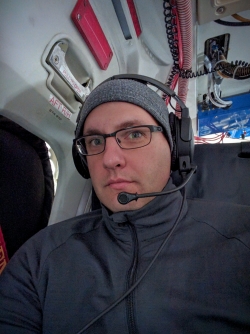
Joseph Katich
separated
Atmospheric Composition & Chemical Processes
Affiliation
CIRES
Joe joined ESRL's Chemical Sciences Laboratory in 2015 to advance understanding of black carbon-containing aerosol in the atmosphere, snow and ice using the NOAA Single Particle Soot Photometer (SP2), with a focus on in-situ airborne measurements. He most recently deployed the SP2 in a field campaign to study emissions from wildfires and prescribed fires and the resulting effect on climate and air quality (NASA FIREX-AQ mission). The SP2 is scheduled to be deployed on several upcoming field campaigns, which will include baseline measurements of aerosol in the stratosphere (2021-2025) and aerosol transport via the Asian Summer Monsoon (2021-2022). Joe is also heavily involved in ongoing studies to quantify black carbon concentrations and size distributions in snow and ice samples from remote regions such as Antarctica, the Andes and the Himalayas.
Other recent work includes quantifying black carbon concentrations and microphysics throughout the troposphere and lower stratosphere in remote areas of the globe as part of the NASA Atmospheric Tomography (ATom) mission. His black carbon analysis has led to the discovery of unique aerosol signatures of pyrocumulonimbus (pyroCb) injections in the stratosphere.
Prior to working with NOAA/CIRES, Joe worked as an experimental nuclear physicist at CU Boulder, Fermi National Accelerator Facility (Fermilab) and Thomas Jefferson National Accelerator Facility (JLab).
Education
B.S., Physics, Westminster College, 2003
M.S., Physics, College of William and Mary, 2006
Ph.D., Physics, College of William and Mary, 2010
Research
black carbon, pyroCb, aerosol
last modified: October 22, 2021

